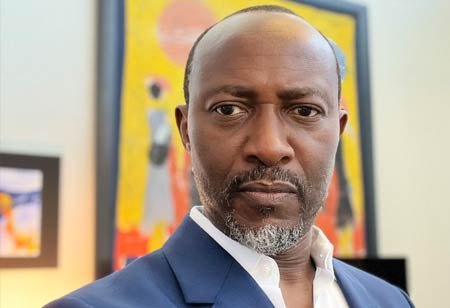Shola Oyewole is a 25-year biotech executive who founded United Therapeutics' digital infrastructure as its first CIO. Today, as vice president of digital innovation, he sponsors enterprise-wide programs that harness AI, data science, and advanced manufacturing to transform drug development and create an unlimited supply of transplantable organs. He also chairs the company’s AI Governance Board, leading governance efforts that ensure innovation is safe, scalable, and aligned with United Therapeutics’ mission. In an interview with Life Sciences Review, Oyewole shared how a culture of ethical innovation, strategic experimentation, and compliance-first design underpins the company's leadership in next-generation biotechnology.
From Infrastructure and Systems to Enterprise Innovation and Governance
My career began at the intersection of purpose and technology. As the company’s first CIO, I led the design of United Therapeutics’ core digital infrastructure. Over time, my role evolved from delivering operational reliability to cultivating innovation strategy and governance.
As vice president of digital innovation, I lead and sponsor enterprise platforms integrating AI, data, and automation into therapeutic development. My focus includes innovation governance, cross-functional enablement, and external partnerships that bridge data, science, and technology to improve patient outcomes.
Innovation in the Technology-Driven Era
My view of innovation has expanded from technical optimization to strategic transformation. Today, innovation means building systems that connect experimental technologies with enterprise priorities.
People—not tools—drive transformation. Innovation scales when trust, curiosity, and structure coexist. Software may execute code, but human creativity and shared purpose generate breakthroughs
Technologies like regenerative medicine, AI, digital twins, and organ biofabrication are no longer speculative. They are emerging tools that help us realize our mission of manufacturing an unlimited supply of transplantable organs. Achieving this requires a culture of inquiry, discipline, and bold thinking, as well as embedding these practices across our development lifecycle.
Identifying Scalable Technologies for BioTech Leadership
We evaluate new technologies based on three strategic criteria.
First, transformational potential - the degree to which a technology can redefine paradigms, such as scalable organ manufacturing or real-time therapeutic personalization.
Second, strategic fit - whether the innovation aligns with our regulatory, operational, and scientific frameworks. UT’s "Do No Harm" principle ensures that any integration meets rigorous patient, partner, and platform standards.
Third, proof of value - quantifiable impact beyond promise. Our Do-iT! Sprints and internal pilots serve as prototype development platforms for evaluating performance, feasibility, and ROI before enterprise-wide adoption.
Institutionalizing Innovation Culture
People—not tools—drive transformation. Innovation scales when trust, curiosity, and structure coexist. Software may execute code, but human creativity and shared purpose generate breakthroughs.
At UT, we institutionalize innovation through enterprise programs like Do-iT! sprints and innovation labs. These aren’t ad hoc events; they are strategic mechanisms I help design to unite researchers, engineers, and analysts around shared challenges.
We champion iteration, feedback, and bold thinking at every level. This discipline helps us translate cutting-edge tools into reliable solutions that accelerate development timelines and expand patient access.
Scaling Innovation through Cultural Architecture
Internal initiatives like The BIG IDEA open innovation challenge and Do-iT! CoLabs demonstrate that democratizing innovation requires cultural design and operational scaffolding.
Innovation flourishes when employees shape both questions and solutions. The BIG IDEA empowers organization-wide participation in idea formation, prioritization, and implementation. Do-iT! CoLabs leverages design thinking to explore ambitious ideas with minimal risk. Teams can test and refine rapidly while aligned with enterprise compliance.
My team supports these efforts through structured scaffolding: mentorship, prototyping guidance, and clear integration pathways. These systems create a resilient platform where inspiration can become enterprise value.
We link innovation to our mission—improving the quality of patients’ lives, lowering costs, enabling new therapies. This connection inspires teams to act urgently, with purpose. We reinforce this culture by celebrating learnings, pivots, and patient impact across internal platforms.
Continuity is key. Clear handoffs, reusable frameworks, and mentorship from prior cohorts embed innovation deeply into our organization’s DNA.
Guidance for Leaders in Regulated Innovation Spaces
Innovation begins with trust, not tools. In high-stakes environments, leaders must create clarity, psychological safety, and permission to experiment responsibly.
Linking innovation efforts to core purpose accelerates buy-in and impact. When our teams understand how their work extends lives, urgency meets precision.
Our innovation labs define safe testing boundaries and translate results into learning. Involving compliance teams from the outset ensures both speed and auditability. This collaboration prevents rework and supports bold, yet compliant, solutions. We also reward the learning process. Success isn’t binary; documenting insights, celebrating smart risks, and sharing learnings make innovation a journey.
Our open innovation programs offer structured support— timelines, mentors, checkpoints—to help ideas evolve responsibly. The journey is visible, reproducible, and scalable.
Breakthroughs often come from convening, not commanding. I view innovation leadership as a discipline of orchestration: aligning internal talent, external partners, and shared goals.
Innovation demands humility. Listening to frontline insight, asking sharper questions, and creating room for surprise are the conditions for progress. In a world where stasis feels safe, standing still is the greater risk. True innovation balances boldness with stewardship.



